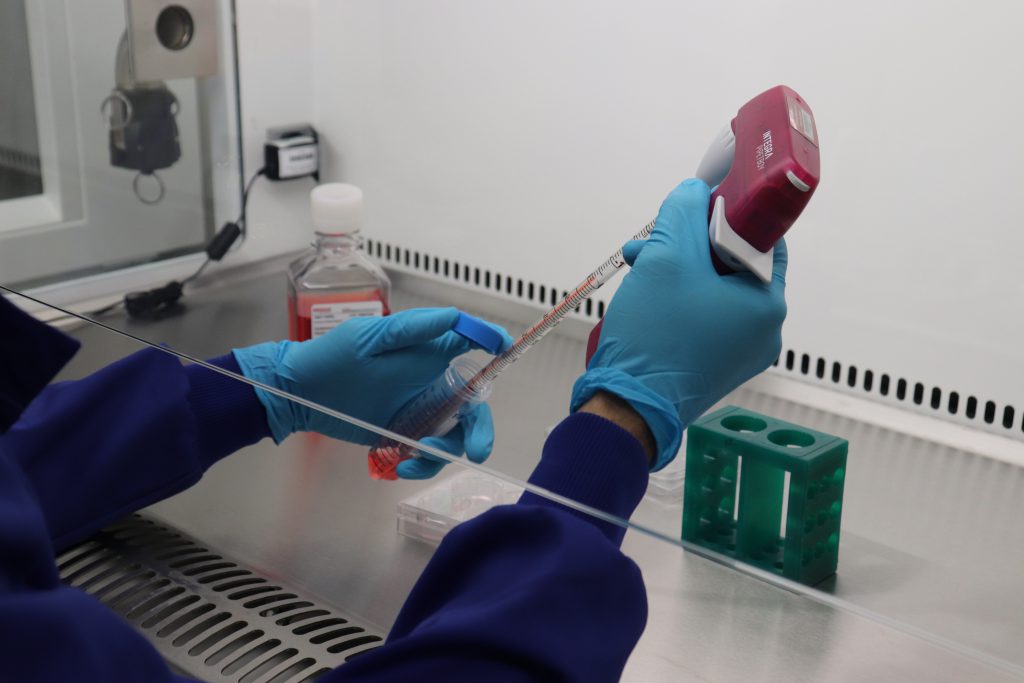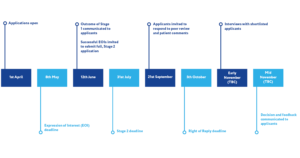
- Posted: 25 June 2020
- Tagged: PCR News
Who will we fund next?
The world’s attention may be on COVID-19, but we know we still need better ways to treat cancer.
COVID-19 has hurt us, but won’t stop us
We can’t deny that COVID-19 has brought us challenges. We are 100% reliant on donations to achieve our goals, and events and fundraising have always been a major source of the income which allows us to make research happen. While our talented and dedicated staff have risen to the challenge of protecting our future, we are still in an uncertain climate.
However, we know that missing the opportunity to fund more outstanding research now could set a better future back by years.
We weren’t willing to take that risk, especially when overall funding is unfortunately likely to decrease. Having first established that we have enough resources to continue to support our current research, we opened our 2020 grant call in April.

Filling the Gap
While there are many cancer research charities in the UK, and our knowledge of the disease has made huge strides forward, there are gaps in the system. Over the past year, our research team has gathered an evidence-base showing that scientists at certain career stages find it more difficult to get funding, and that our knowledge of prostate cancer has a number of gaps.
We wanted to use this grant call to fill those gaps, but we didn’t want to close ourselves off from funding excellent research with real potential to improve patients’ situations, just because it didn’t fit neatly within the areas we’d identified. We also encouraged applications from talented early career researchers who often struggle to get funding from elsewhere. We need to ensure fresh thinking, and to keep talented people in the field.
We decided to keep the grant call open, but to highlight areas we were particularly interested in. 55% of applications responded to the themes we had highlighted, showing that the will and the potential to solve these problems is there. We’re also happy that 45% of applications were not related to the areas we highlighted, as it shows that highlighting certain questions didn’t put other researchers off applying to us.

We sent the call for applications to all our own contacts, as well as via universities. However, we knew that the informal, word-of-mouth channels by which people hear of new opportunities had diminished significantly as labs closed and we entered lockdown. We were delighted, then, to receive 40 applications for funding.
Shortlisting
One of the major changes we have made this year is that the shortlisting has been much more stringent. Of the 40 applications submitted, only 11 have been invited to the next stage.
One reason for this is COVID-19. We have worked with all of our scientists to ensure that wherever possible, research is not brought to a standstill throughout this crisis. The continuation of our current projects, and the welfare of the scientists carrying them out, is important to us.
A lot of work is required, behind the scenes, to process every funding application. Our small research team expects to be busy in the coming months as we support scientists back to their labs and assess what adjustments are needed to help them make up for new working patterns, lost lab time, and any other challenges that COVID-19 has brought. Limiting the shortlist was the best way to ensure we could give new funding proposals the attention they require and deserve without compromising our commitment to our current researchers.
We are also committed to reducing the time scientists spend on applications and providing them with a quick decision.
This is why we designed a two-stage application process, with an initial Expression of Interest which is less time-intensive than many standard funding applications. We only invite applicants to commit to writing a detailed application when they have come through a competitive shortlisting process and have a considerable chance of success.
While we understand that it is disappointing not to have progressed to the shortlist, having an answer within six weeks of an application means scientists are free to apply elsewhere, using the feedback we provided to strengthen their applications if they wish.
EOIs were assessed on whether they were a fit with the charity and our research strategy, whether they were of high scientific quality and whether they were likely to benefit people affected by prostate cancer.
What happens next?
The 11 shortlisted applicants have until the end of July to prepare their detailed applications. Each application will be reviewed by a small number of experts in the applicant’s own field – ‘peer reviewers.’ We will also be inviting people with lived experience of prostate cancer, whether as a patient or a family member, to review plain-English summaries of each shortlisted application and provide comments.
The applicants will have a chance to respond to the comments and questions raised by both peer reviewers and patient representatives. Our Scientific Committee will then review and discuss each application, taking into consideration the reviews it received and how the applicant responded to the points raised.
Last year, we held our inaugural patient panel in London. This year, we hope to expand our patient panels so that more people can take part in more areas across the UK, such as northern England, Scotland and Wales. Taking part in our patient panels doesn’t require any special or medical knowledge: it’s a way that a person can use their own lived experience to be part of selecting which research to fund, and in so doing, to benefit the next generation of families who will receive a prostate cancer diagnosis.
“By 2035, prostate cancer could kill 50 men a day in the UK if breakthroughs are not made. We hope to fund as many of the shortlisted projects as we can. With continued support from individuals, companies and trusts, we can continue to make ever-greater strides against this disease.
If you would like to be kept informed of any future funding opportunities, please opt-in at [email protected].